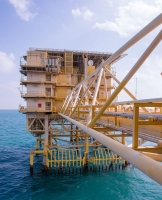
The Safaniya Oil Field , located about 260 km north of Dhahran City , in the Eastern Province , is the largest offshore oil field in terms of the reserves of traditional resources for the Kingdom of Saudi Arabia and the World. It contains a confirmed reserve of 34.03 billion bbl of oil equivalent. Most of the field is located within the waters of the Arabian Gulf. It stretches for about fifty km in length and fifteen km in width within the concession area. Saudi Aramco discovered the Safaniya O...

Ayn Dar Oil Field is situated west of Abqaiq City in the Eastern Province of the Kingdom of Saudi Arabia. It was discovered by the Saudi Arabian Oil Company ' Saudi Aramco ,' which began using a drilling rig for Ayn Dar Well No. (One) on April 10, 1948. On July 22, 1948, the company confirmed the presence of large quantities of oil at a depth of two km in the Arab Zone 'D' of the field. Subsequently, a second well was drilled five km south of the first well. ...
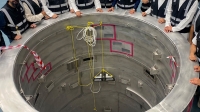
The Low Power Research Reactor Project is the first nuclear research reactor in the Kingdom of Saudi Arabia, dedicated to the peaceful use of nuclear energy. Operating at a capacity of one hundred KW, the project aims to reduce carbon emissions and greenhouse gases. The project is one of the energy projects under Saudi Vision 2030 . It was inaugurated by Crown Prince and Prime Minister, His Royal Highness Mohammed Bin Salman Bin Abdulaziz Al Saud , on November 5, 2018. The project is overseen b...
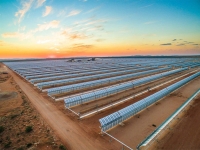
The Kingdom of Saudi Arabia is working to increase the contribution of renewable energy sources to domestic energy consumption and to achieve an optimal energy mix for electricity production with high efficiency and competitive costs. Additionally, it is establishing partnerships with the private sector to enhance renewable energy generation capacity within a specified timeframe. As-Sudayr photovoltaic solar power plant project It is located in Riyadh Province , with a production capacity of 1,...
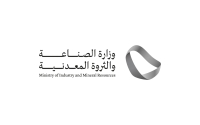
The Ministry of Industry and Mineral Resources oversees mining activities in the Kingdom of Saudi Arabia. It works to encourage investment in the mining sector, provide services and consultations to support this activity, and issue mining licenses and permits in accordance with applicable regulations and laws. This is implemented under the Mining Investment Law issued in 2020 and its executive regulations. The Saudi Geological Survey is an integral part of the Kingdom's industry and minera...
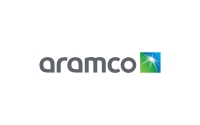
Sulfur is available in sufficient quantities in the Kingdom of Saudi Arabia, primarily as a byproduct of oil extraction and refining processes. Additionally, native sulfur is found associated with gypsum and anhydrite sequences in Wadi Kabreet along the Gulf of Aqaba. It is also present in the al-Bad' and Magna regions within the coastal sedimentary rock formations. Sulfur is also found in ar-Raka area in al-Quway'iyyah within Paleozoic cover rocks. Additionally, sulfur can be extract...
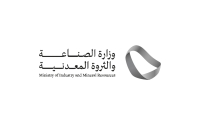
The National Minerals Program is a national program concerned with the efficiency and sufficiency of current and future minerals supply chains in the Kingdom of Saudi Arabia . It is affiliated with the Ministry of Industry and Mineral Resources . It aims to optimize the value created by the mining sector and foster the continuity of regional and global mineral supply chains. The Council of Ministers approved the program on July 16, 2024. Plans of the National Minerals Program The National Miner...
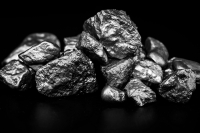
Zirconium metal is derived from the mineral zircon, which is found in the Kingdom of Saudi Arabia in non-economic quantities, typically associated with volcanic intrusions in the rocks of the Arabian Shield. The main locations where it can be found are al-Ghurayyah, Jabal Sayid, Umm al-Birk, and Jabal al-Hamra. However, no economically viable concentrations of zircon-containing heavy minerals or beach deposits have been discovered. Zirconium is considered one of the rare metals, and the Ministr...
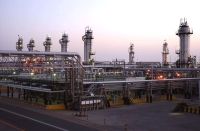
The Buqayq Field is located in the Eastern Province of the Kingdom of Saudi Arabia . It is an onshore oil field discovered in 1940 and is one of the first oil fields discovered in the Kingdom. It houses the largest crude oil stabilization plant in the world, supplying approximately 5 percent of the world's oil. It is approximately forty-eight km from Dhahran City , where the headquarters of Saudi Aramco is located. To its west lies the Ghawar Field , the largest conventional oil field in t...
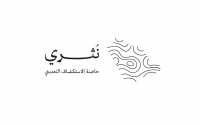
The 'Nuthree' Mining Exploration Incubator Initiative is an initiative aimed at increasing expenditure on exploration activities, supporting the Saudi geological database with more reliable information, and increasing the number of national companies. It was launched by the Ministry of Industry and Mineral Resources in the Kingdom of Saudi Arabia on March 10, 2023, in collaboration with the Saudi Geological Survey and the General Authority for Small and Medium Enterprises (Monsha’at...
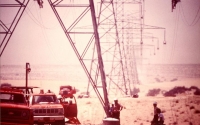
Electricity in the Kingdom of Saudi Arabia began in 1907 with two generators powered by coal and kerosene. Over the following decades, it evolved, leading the Kingdom into the era of renewable energy projects. The country witnessed the establishment of a legislative and regulatory framework for this sector, with specialized companies created to produce and transmit electricity. The history of the introduction of electricity into Saudi Arabia Electricity was introduced into the Kingdom in 1907 t...
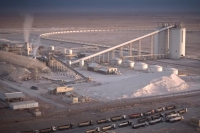
The number of gold mines in the Kingdom of Saudi Arabia is six, with a total production of 434,845 oz. in 2020. Ad-Duwayhi Mine, the currently largest gold-producing mine in the Kingdom, is located in Makkah al-Mukarramah Province and has produced 248,998 oz. Al-Amar Mine , located west of Riyadh Province , produced 31,968 oz. The Bulghah and as-Sukhayrat Mines, located in al-Madinah al-Munawwarah and Qassim Provinces, had a combined production of 78,524 oz. Mahd ad-Dhahab Mine , located in al-...